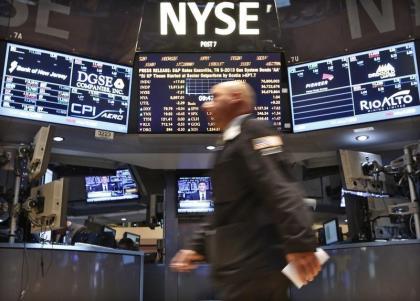Dow’s Run to 14,000 Humbles the Worriers — For Now
Having already logged its best January since 1994 with a 5.8% gain, the Dow Jones Industrial Average started February by tagging the 14,000 mark Friday for the first time since October 2007. That followed the Standard & Poor's 500 index's recent summit of the 1500 level, the market’s other notable climb past round-number altitudes.

So far in 2013, the "risk" has resided in over-thinking the situation by focusing on the potential pitfalls and complications that might arise from a slow-growth economy, peak corporate profit margins, policy dysfunction and stock prices that had already doubled since the March 2009 market bottom.
Instead, the straightforward rationale for buying stocks has prevailed in recent weeks: Inflation is tame, economic growth stable, companies have posted better earnings, investors are under-exposed to stocks and money remains cheap.
Given this backdrop, the employment numbers for January, released on Friday morning, spoke to the optimists the words they most wanted to hear: "Nothing much has changed."
The 157,000 net new jobs counted last month almost precisely equaled the monthly average pace of reported job growth of the prior 12 months. This, along with upward revisions to the prior two months' employment gains, blunted the already modest blow of a fractionally negative GDP estimate for the fourth quarter.
And the tick higher in the unemployment rate to 7.9% means that the Federal Reserve's policy of granting an $85 billion monthly "allowance" of asset purchases to the financial system is at no risk of changing soon.
Finding a worry
In the current market context, status quo means that stocks simply default to the dominant trend -- a plodding but impressively steady upward bias, with all-time index highs within easy sight.
The main thing to worry about at this point is how much has gone right for stocks as 2013 got underway, perhaps causing too much good news to be priced into the market and encouraging traders to over-extrapolate the positive trend.
Congress got the fiscal cliff and the debt ceiling battle out of the market’s immediate path. Lots of defensive selling following the election left investors feeling under-invested as stocks started to lift. And companies kicked $25 billion in special dividends to individuals last quarter that in part are spilling back toward stocks.
Most of all, confidence has finally set in that the foreboding macroeconomic threats and scary shocks of the past few years have been tamed by activist, market-supporting central banks.
This favorable scenario has become something like the dominant consensus, leading investor sentiment to approach a lopsided optimistic stance that can, by contrarian logic, be a downside risk in itself. Stocks are valued in a neutral range -- neither expensive nor cheap based on earnings relative to history -- so they can be carried pretty far in either direction by the swing of incremental economic news and investor attitudes.
Overconfidence among bidders for stocks is the potential fuel for at least a quick reversal to the downside. The major indexes this year have yet to close below the prior day's lowest level, which means doubters have been harshly punished and buyers of every dip have only been emboldened. This is the mark of a sturdy, irresistible rally, but after a long enough time of seeming too good to be true, things usually prove to be exactly that.
The weekly National Association of Active Investment Managers survey this past week showed professional investors to be as bullish as they've been in the six-plus years of the poll’s history. Not only was the average active fund manager positioned aggressively for still-higher prices, but even the most skeptical respondent was net-long stocks, whereas the least optimistic manager is usually net short the market. This implies a worrisome degree of herd-like betting on further market gains.
The likely gut check
Among the historical tendencies for the first days of a month, Feb. 1 is on average the second strongest of the year, after May 1, according to McMillan Analysis, a pattern borne out Friday. Following that first day, February tends to be among the weaker months of the year, though in years when January returned 5% or more February has been stronger than average. Strong Januaries have tended, too, to result in strong years, though the likes of 1987 and 1997 that began with a surge featured punishing financial "accidents" (a crash and a currency crisis, respectively) months down the road.
Under the surface, the market has at times seemed a bit tired. Some leadership sectors, such as the Dow Jones Transportation Average, mid-cap stocks and banks, have flagged in the past week. The credit markets, while still remarkably strong, have also softened up slightly.
A decent definition of a powerful bull market is one that refuses to let latecomers in at prices that are low enough to feel comfortable. Perhaps that's what this market will show itself to be, with optimism acting not as a warning sign of dangerous complacency but a self-reinforcing embrace of stock-ownership. If so, it would also probably engender the kind of galloping business confidence that should lead to lustier acquisition and stock-offering activity.
Before this happy narrative can be assumed to serve as the storyline for 2013, the market will have to prove that it can withstand the sort of gut check that almost always comes along at times when a heavy majority of folks can find few reasons to doubt that a rally will roll on.
